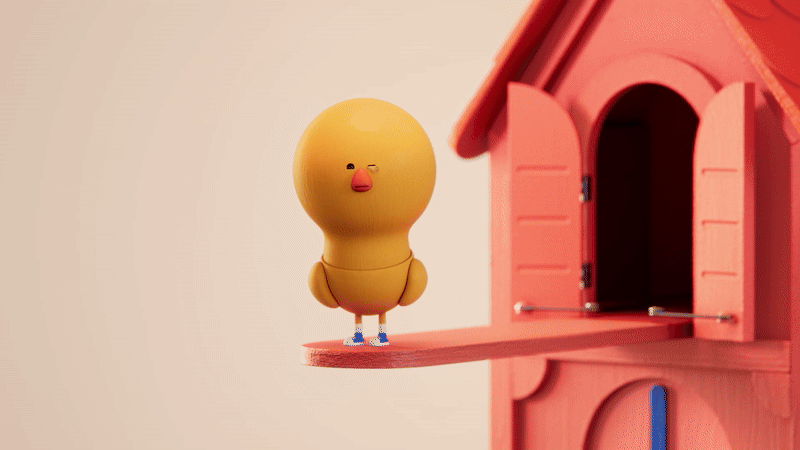How to... shoot in zero gravity
Director Corydon Wagner recently filmed a spec spot for Virgin Galactic that needed him to replicate being in space. Here, he reveals the tricks he employed to make us believe the production took one giant leap.
LAUNCH
When we look back on our lives there are only a few things that we remember with visceral clarity: the moment we first fall in love, the moment in which we hold a child we cherish - be it ours or another’s - and the moment in which we choose to take a risk of unknown proportion. All of these experiences represent a shift in our understanding of the world and of ourselves.
What better way to describe the feeling on offer than to ground it in its earthly counterparts: love, risk, liberation and reaching into the unknown.
But there’s another moment capable of humbling and expanding the human mind, one only experienced by those (as of now) lucky enough to have had access. Astronauts report that the precise instant in which they behold Earth for the first time, floating amidst the darkness and stillness, they experience a seismic internal awakening that renders them both insignificant in scale yet full of a renewed sense of purpose. Scale always exposes our place in the world - like standing before the Grand Canyon or sailing on an open ocean.
So, in setting our sights on Virgin Galactic, a company dedicated to the pursuit of putting people in space, what better way to describe the feeling on offer than to ground it in its earthly counterparts: love, risk, liberation and reaching into the unknown. We’ve all been here, so perhaps we can imagine what it will feel like, one day, to be there.
Credits
View on-
- Production Company Two of Us
- Director Corydon Wagner
-
-
Unlock full credits and more with a shots membership
Credits
View on- Production Company Two of Us
- Director Corydon Wagner
- Executive Producer Gianni Cerretani
- Producer Collin Doherty
- Production Designer Gino Fortebuono
- DP Timur Civan
- Editor Mickey Todiwala
- Effects Perry Kroll
- Colourist Vladimir Kucherov
- Sound Designer Weston Fonger
- Music Mike Dragovic
- VO Alan Watts
Explore full credits, grab hi-res stills and more on shots Vault

Credits
powered by- Production Company Two of Us
- Director Corydon Wagner
- Executive Producer Gianni Cerretani
- Producer Collin Doherty
- Production Designer Gino Fortebuono
- DP Timur Civan
- Editor Mickey Todiwala
- Effects Perry Kroll
- Colourist Vladimir Kucherov
- Sound Designer Weston Fonger
- Music Mike Dragovic
- VO Alan Watts
COLLABORATION
Virgin Galactic’s bold mission to open the outer limits of space to everyone provided us with the ideal metaphor for everyone's pursuit of his/her own limits. Through discussions with my London-based EP, Gianni Cerretani of Two of Us, it became clear to us both that linking the exploration of space and of the self would be the best visual narrative and eventually, script.
Floating in zero gravity is a coveted experience for a reason - it’s nearly impossible to replicate easily, quickly, or cheaply.
Despite saddling ourselves with a highly ambitious shot- and task-list of in-camera effects, Gianni provided me with the creative collaboration necessary to tackle everything from filming weightlessness while grounded on Earth to weaving together a storyline grounded in emotion.
ZERO GRAVITY
Floating in zero gravity is a coveted experience for a reason - it’s nearly impossible to replicate easily, quickly, or cheaply. Telling this story, however, couldn’t happen without seeing the sensation on screen, so we had to get creative. We combed through every video, movie, and doc available to us in order to ensure our shots were visually stunning but also humanly accurate. I’m proud to say that, in the end, no green screens were used. No wires painted out. No post budget blown.
Zero gravity is an enormous challenge for any filmmaker. Our solution? Harness the power of gravity itself. We used it as a tool to create the illusion our actors, seatbelts, and ships were floating in deep space. By getting crafty with PVC pumps, rappelling rigs, and a few other secret hacks we could film zero gravity with ease. Comfort even!
Getting ‘comfortable’ however, took a village. We enlisted production designer extraordinaire Gino Fortebuono to go on an online treasure hunt and dig up the schematics of the Virgin Galactic spaceship itself. Once we unearthed the plans, Gino and his team went straight to working building a plywood cylinder- shaped replica in a warehouse in Queens, New York.
Zero gravity is an enormous challenge for any filmmaker. Our solution? Harness the power of gravity itself.
The final product measured 25ft x 9ft and was propped up like a sky scraper, or an enormous water bottle with the ends cut off. All that we did next was point the camera from the ground upwards and had our talent repel down toward us, rock climber style! Once we positioned the light to cast the idyllic beams through the portholes and slowed the footage down to 48fps, the magic was made.
SEATBELT
You can’t simply show a rocket launch immediately followed by a floating hero, there would be no suspense, no lead up, no visual bread crumbs! The seatbelt is a visual element we used to guide the viewer from the launch, to the silent suspense after breaking the atmospheric barrier, and finally to the free floating realisation of having arrived.
Just when we thought our options were limited, Special Effects Supervisor Matty Fisher rigged PVC piping under the fabric of each belt.
But seat belts don’t manipulate easily. And human talent doesn't love hanging upside down from the ceiling... so just when we thought our options were limited, Special Effects Supervisor Matty Fisher rigged PVC piping under the fabric of each belt. Sound genius? It was. As Matty pumped air pressure into the tubes the fabric inflated upwards, as the air pressure released, the fabric deflated and fell with perfect grace. All we had to do was shoot the belt falling, reverse the footage at 80fps and gravity was a distant memory!
WATER STUNTS
Even the locations were meant to provide visual contrast: light/dark/rugged/smooth/weightless/weighted. The jagged cliffs surrounding Puerto Rico’s Cave of the Indians perfectly juxtaposed the elegant uniformity of space. Atlantic rollers shaped and shaved the limestone, over millennia, into a prehistoric panorama and the 100ft spray erupting from the rocks only intensified the scale of the danger and the reward.
In all locations, be they under water, interior, or interpersonal shots, we focused our attention on guiding the light through in beams identical to those in the spaceship.
However, thanks to the staggering bravery of our stunt performer, Kyle Paul, we were able to shoot a leap down into the ocean below - an astounding 60ft drop. In all locations, be they under water, interior, or interpersonal shots, we focused our attention on guiding the light through in beams identical to those in the spaceship.
EFFECTS
In this era of digital filmmaking, most extraterrestrial shots are accomplished with special effects. CGI and 3D have expanded our filmic capabilities, but I didn’t want to use them. Instead, this spot soars in thanks to in-camera effects paired with satellite imagery, and a sparing percentage of special effects (namely, the simple composite of space imagery into the ship portal).
Once our vision was shot and captured, we turned our attention to the endless archives made public by Virgin Galactic and NASA. Thanks to these open access resources, our team could weave together the spot just as we envisioned. Working in close collaboration with Perry Kroll (VFX) and Vladimir Kucherov (colour), we passed the files back and forth dozens (and dozens) of times until the shots felt unquestionably real.

Above: Director Corydon Wagner.
SOUND
Think about it; when you’re zooming into the atmosphere there’s not much but sound. Your eyes might be pressed shut and the windows shrouded with fire and smoke and you can hear the force of the fuel, the deafening vibration of carbon fibre, but then... nothing. Stillness. Emptiness. Until you spot the planet at a distance and everything opens into symphonic clarity.
Sound was the most important component to this piece; it had to tell the story just has effectively as the footage. So, we grounded the sounds of space into the sounds of Earth. The rocket sounded like crashing waves, the depth of space like underwater air bubbles, and the vibrations like those static waves on an old TV set signalling a new chapter about to begin. Thanks to Weston [Fonger] and Mike [Dragovic] at Yessian Music, who helped me to take viewers on this audio adventure.
The final and most important element was the timeless voice of British-American poet Allan Watts. He always had a hold on me, especially since he seemed to so effortlessly remind us to let go of the things that have no significance so we re-attach to the things that give us a bigger purpose. After combing through hundreds of hours of Watts’ audio files, we finally found the winning lines.
)





























